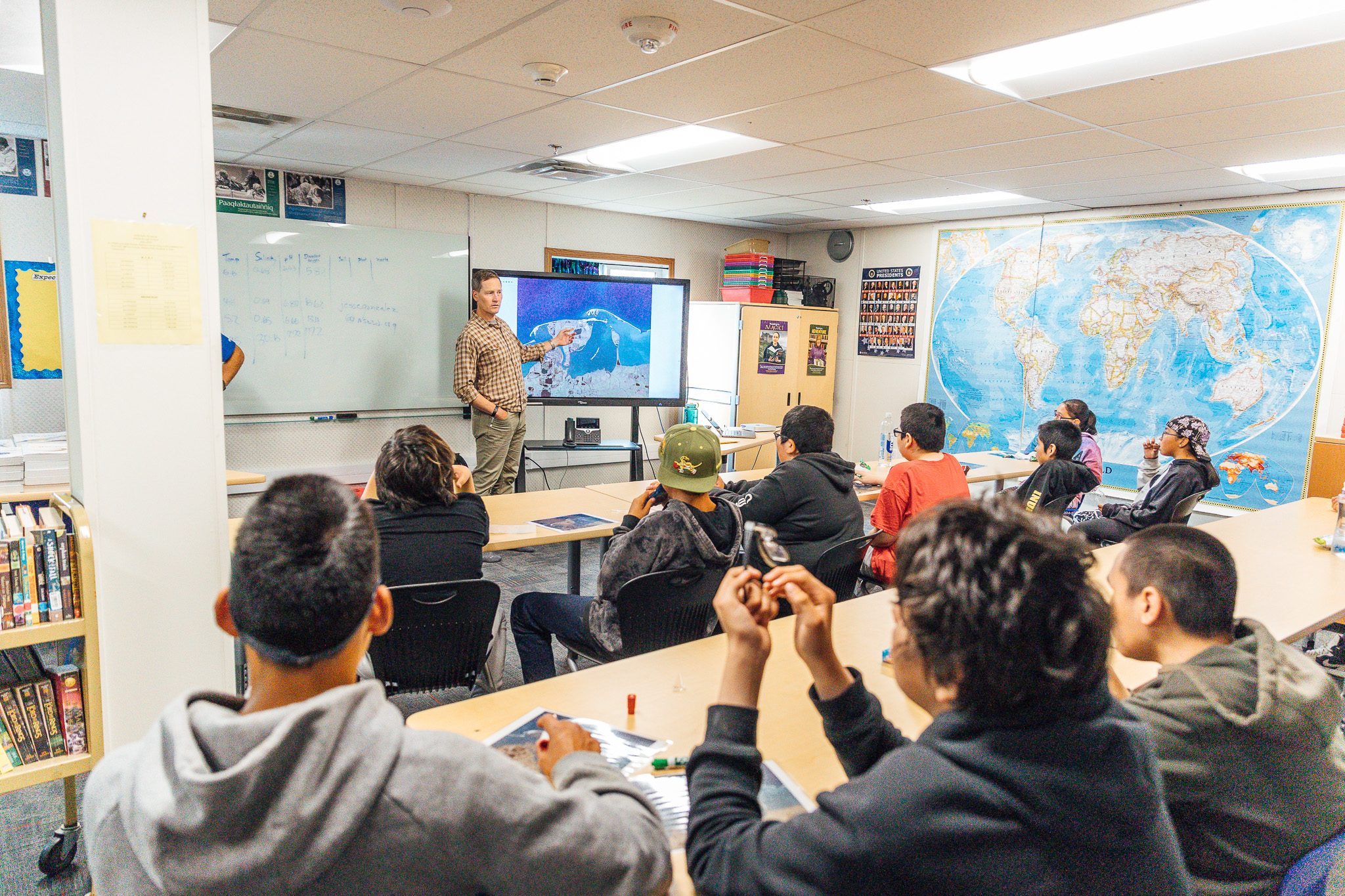Education and Outreach
Arctic Coastal Oceanography Unit
This unit combines classroom sessions with an in-person field day to teach fundamentals of Arctic Coastal Oceanography. It is published in the NAGT Teach the Earth Portal.
Read more
The approach integrates sensor preparation and deployment with scientific concepts and hypothesis development. The key objectives of the unit include learning the physical oceanography concepts of ocean temperature, waves, and currents, as well as the marine geology concepts of turbidity and coastal sediment transport. Additional objectives are providing experiences with sensors and programming, data collection, and data analysis. The project was developed to bring Arctic Oceanographers together with students from a specific Arctic village (Kaktovik, Alaska) along the coast of the Beaufort Sea. The material can be adapted for use in other coastal Arctic or mid-latitude classroom environments. A primary goal of this unit is to encourage students in coastal communities to consider how a coastline evolves and changes over time, what materials it is composed of (sediments), and how the ocean plays a role in those processes. A related goal is to engage students in tangible aspects of climate change that may affect local people living in coastal zones.
National Ocean Sciences Bowl 2021 Professional Development Webinar: Earth's Frozen Oceans
The Properties and Importance of Sea Ice
Drs. Bonnie Light and Maddie Smith
Read more
Sea ice forms a frozen lid on much of the earth’s Polar oceans. The properties of this ice play a large role not only in the ocean, but also the global climate. In this presentation, we’ll introduce the unique and interesting features of sea ice, including its high reflectivity (“albedo”). We introduce the ways we measure these properties in remote polar oceans and use these observations to improve computer climate models.
NASA GISS Sea Level Seminar: On pancakes and polynyas
The role of waves in sea ice formation [49:05]
Dr. Maddie Smith
Read more
Sea Level Rise Seminar, 2021-04-20
Speaker: Madison Smith
Title: On pancakes and polynyas: The role of waves in sea ice formation
Abstract: The wave climate of the Southern Ocean is among the most extreme in the world, and recent substantial loss of sea ice coverage in the Arctic Ocean has resulted in a large seasonal wave. Waves are attenuated far into the sea ice, but are a defining feature of the marginal ice zone, as well as coastal polynyas, where strong winds away from the coast result in rapid ice formation. Thus, the generation and propagation of waves in ice-covered regions has a key role in ice formation. Observations of waves in both environments illuminates the associated processes. Incorporation of the empirical results into new coupled wave-sea ice models aims to improve our understanding of the role of floe-scale interactions in the larger ice pack, and likely has implications for regional water mass transformation.
Camden Conference 2021: A Year in the Ice
Insights into the Changing Arctic Ocean from the MOSAiC Expedition [1:08:05]
Dr. Maddie Smith
Read more
The MOSAiC expedition was a collaboration of 20 nations to freeze a research ship into the ice of the Arctic Ocean for an entire year, allowing scientists to observe the changing Arctic sea ice and climate. Dr. Smith collected data during the summer leg of the expedition to understand how sea ice is melting in the new Arctic. The data and observations she and her team collected will be used to improve model projections and provide insight into future changes. In this talk, Dr. Smith will share stories of her experiences as part of the largest polar expedition in history.
Hosted by the Rockland Public Library
ENGAGE Science Speaker Series 2017
Understanding the changing Arctic Ocean [23:04]
Maddie Smith
Read more
Part of the University of Washington’s Engage Program, Maddie Smith presented her PhD research on how melting sea ice and waves are changing and interacting in the Arctic Ocean. This talk was presented at Town Hall Seattle as part of the 2017 UW Science Now lecture series on March 13, 2017.




